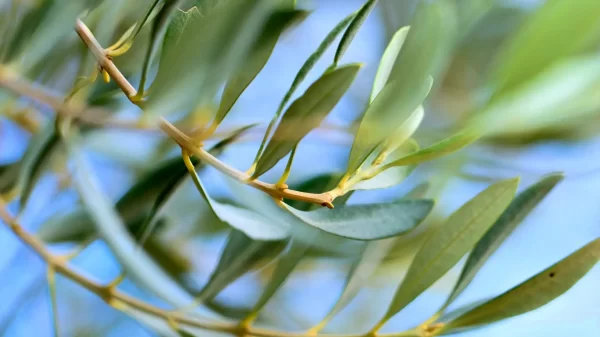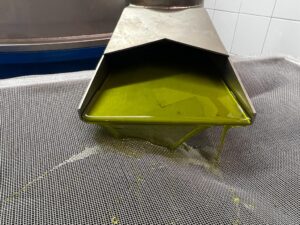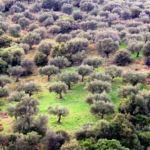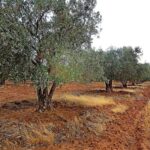1 Often due to causes related to the cultivar, the harvest at the beginning or end of the season, adverse weather conditions during ripening, the impossibility of picking the olives on the most suitable days, the presence of high percentages of water in the fruit or incorrect ripening of the drupes, the olive paste is difficult to work with and is often full of foam or solid parts which have an emulsifying action for the drops of oil in the water, resulting in low yields. In addition to these negative aspects dictated by particular causes, it should be added that the difficulty in extracting all the oil contained in the fruit is one of the main problems of modern mills: and each producer has as its objective the need to extract the greatest possible quantity of oil at the highest quality during processing in the oil mill. To overcome these problems, malaxing times are usually lengthened or temperatures are increased, with a general lowering of quality, acceleration of oxidative processes and loss of volatile compounds. All these problems could be overcome by using physical extraction aids, which do not carry out any type of chemical action. One of the few products that can be used in the processing of olives aimed at the production of (extra) virgin oil is the talc because performs a purely mechanical action: it is no coincidence that it has been used in the oil mill since the end of the 70s in Spain and since the 90s in Italy. Before using it, however, it is advisable to make sure that the olives to be processed are not subject to any particular production disciplinary which limits or prohibits their use.Talc is a mineral present in metamorphic or igneous rocks, quite widespread in northern Italy, composed of hydrated magnesium silicate; it is normally used in the plastics and porcelain industry, in the production of drugs, cosmetics, feed, paint and some food production processes.
Often due to causes related to the cultivar, the harvest at the beginning or end of the season, adverse weather conditions during ripening, the impossibility of picking the olives on the most suitable days, the presence of high percentages of water in the fruit or incorrect ripening of the drupes, the olive paste is difficult to work with and is often full of foam or solid parts which have an emulsifying action for the drops of oil in the water, resulting in low yields. In addition to these negative aspects dictated by particular causes, it should be added that the difficulty in extracting all the oil contained in the fruit is one of the main problems of modern mills: and each producer has as its objective the need to extract the greatest possible quantity of oil at the highest quality during processing in the oil mill. To overcome these problems, malaxing times are usually lengthened or temperatures are increased, with a general lowering of quality, acceleration of oxidative processes and loss of volatile compounds. All these problems could be overcome by using physical extraction aids, which do not carry out any type of chemical action. One of the few products that can be used in the processing of olives aimed at the production of (extra) virgin oil is the talc because performs a purely mechanical action: it is no coincidence that it has been used in the oil mill since the end of the 70s in Spain and since the 90s in Italy. Before using it, however, it is advisable to make sure that the olives to be processed are not subject to any particular production disciplinary which limits or prohibits their use.Talc is a mineral present in metamorphic or igneous rocks, quite widespread in northern Italy, composed of hydrated magnesium silicate; it is normally used in the plastics and porcelain industry, in the production of drugs, cosmetics, feed, paint and some food production processes.
Talc is translucent-transparent, practically resistant to acids, does not melt, is greasy and soft to the touch, has high absorbent properties and low hardness; it is inert and insoluble. It is classified as a non-dangerous product and does not contain substances with exposure limit values, does not react with other substances, does not require any precautions for use, transport and storage and has no expiry date.
Talc is a natural product and therefore its quality depends on the place of production and the processing method: the purer it is, the more oleophilic it is; the finer it is, the greater the active surface. For this reason, it is increasingly easy to find pure micro Talc or Micronized Talc on the market.
Its cost depends on its granulometry (the more micronized it is and obviously the more it costs) and the quantity that is purchased (it can be found in the shop in packs ranging from 1 to 25 kg). We can say that the one in bags suitable for use in the mill has a cost between € 2,00 and € 4,00 per kg.
How it works it is soon said. In the olives there are naturally present a series of molecules responsible for the difficulties of extracting the oil from the paste: in particular pectins and proteins that favor oil/water emulsions; their concentration depends on the cultivar and the state of ripeness of the olives.
The main function of the talc is to absorb the excess water of the olive paste, thus bringing the humidity to the ideal value of about 50%, favoring the maximum extractability of the oil with decanter and vertical centrifugation. In particular, microtalc has an active action in "breaking" emulsions, allowing for more free and therefore extractable oil.
The talc also prevents the formation of oil/water emulsions in the kneader, favors the breaking of the emulsions formed during the pressing phase, reduces the amount of solid particles in the oil, releases the oil droplets trapped in the cell walls of the olives, helping the formation of drops bigger ones, increasing the yield and decreasing the kneading times.
Talc should be used in percentages between 0,5 and 4% of the weight of the paste; the dosage and type (greater or lesser fineness) must be chosen taking into account the variety and ripening period of the olives: for this reason it is important to use an easily adjustable dosimeter to be connected continuously to the crusher. Depending on the percentages, different results occurred. The studies carried out would lead to the formulation of the hypothesis that 2% allows an improvement of about 4% in the extraction, while an overdose negatively influences the extraction process.
In addition to this, oils extracted with talc are less cloudy and clearer of those obtained without the addition of the adjuvant, very similar to those obtained from pitted olives.
It has been widely documented over the years that its use does not change the chemical, nutritional and sensory characteristics of extra virgin olive oils and does not influence the natural evolution during storage.
di














